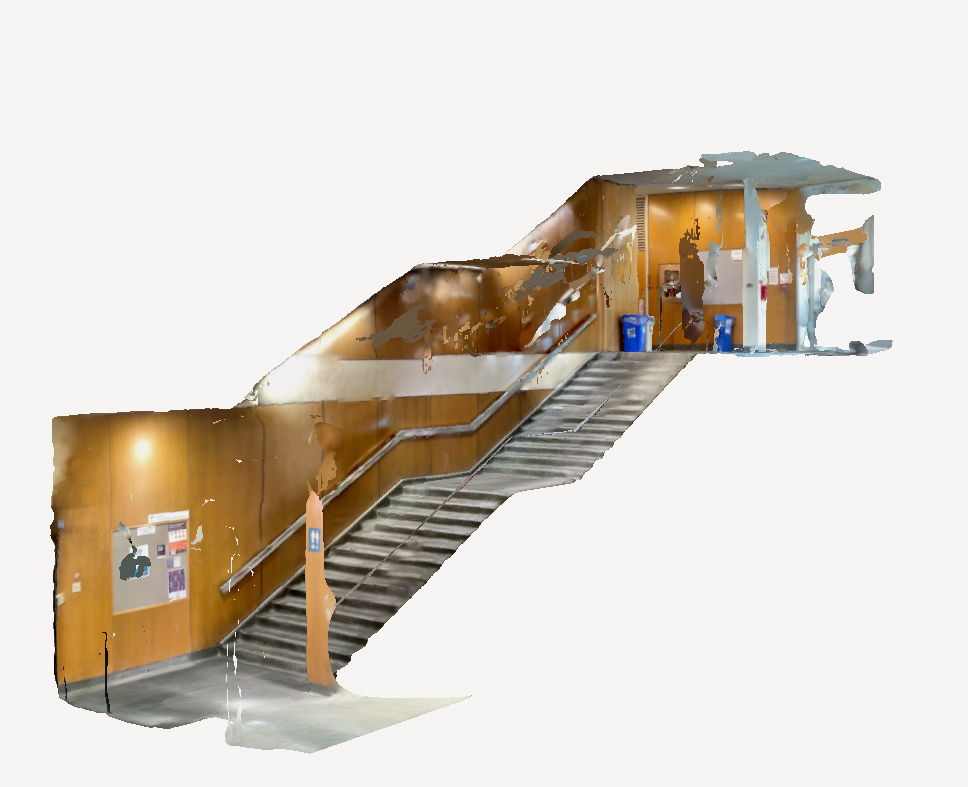
UM/SSHRC Explore Grant Announcement: 3D Scanning Technology in Interior Design Preservation
The adoption of 3D scanning technology in architectural practices has seen significant growth across both academic and professional sectors. The discipline of interior design is particularly interested in this technology due to its ability to preserve and record building data. During the summer of 2023, initial research conducted with undergraduate researcher Vyas Gopal enabled Assistant Professor of Interior Design, Jason Shields, to explore the potential of 3D scanning for interior environments. This early-stage research delved into the complexities of photogrammetry and the integration of 3D scans into game engines to create virtual reality simulations.
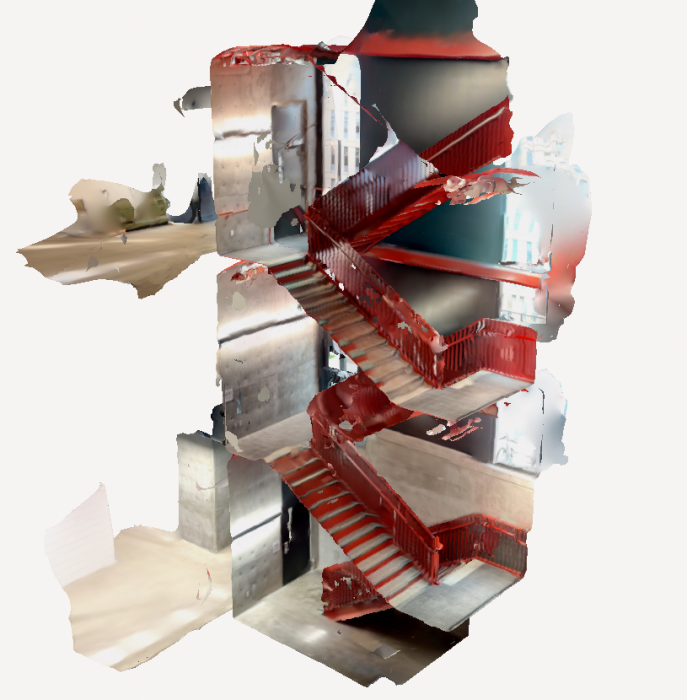
Preliminary photogrammetry (3D scan) of the Stanley Pauley Engineering Building staircase.
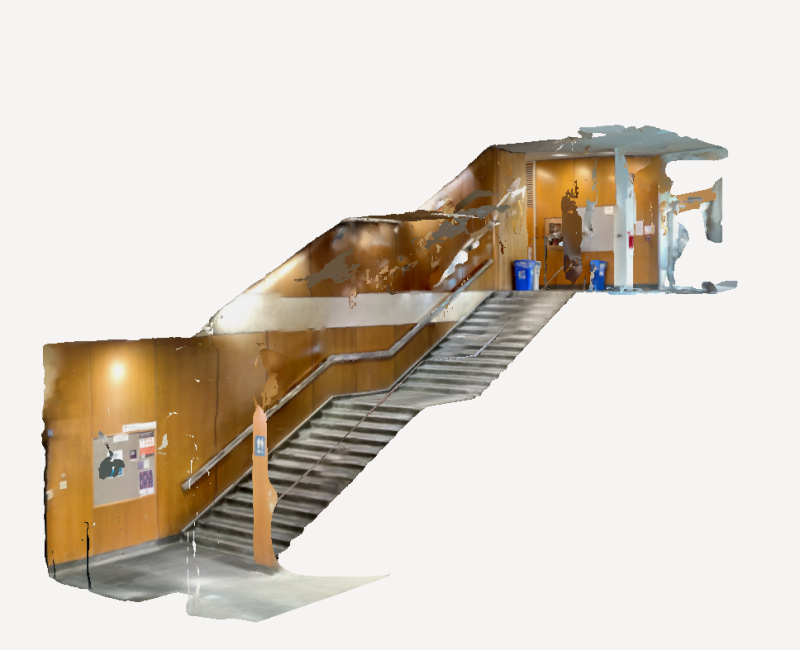
Preliminary photogrammetry (3D scan) of John A. Russell staircase.
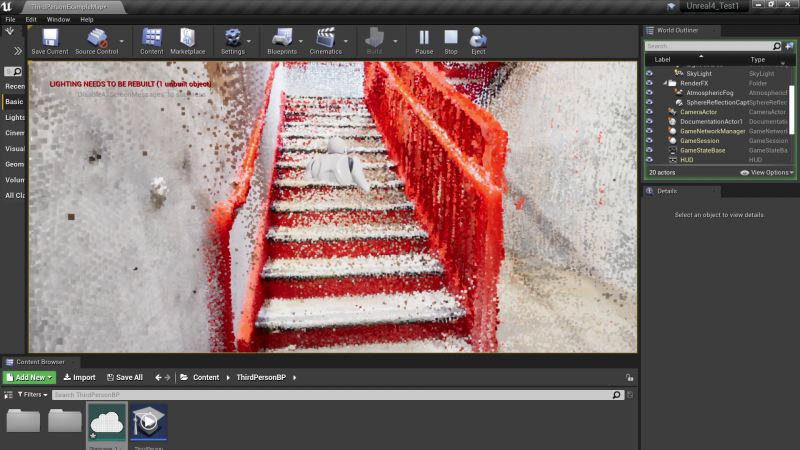
3D scan of Stanley Pauley Engineering staircase integrated into Unreal game engine for third-person and VR simulation testing.
Jason Shields recently presented his preliminary findings at two North American conferences: the Interior Design Educators Council (IDEC) Eastern Regional Conference hosted in Boston in October 2023 and the Society for the Study of Architecture in Canada (SSAC) 49th Annual Conference in May 2024 . His presentations, “Scanned Realities: Reinterpreting Significant Interior Environments into VR Simulations” and “Preserving the Past: LiDAR Scanning and Digital Representations of Interior Environments,” highlighted the innovative potential of 3D scanning in architectural preservation and design.
In 2023, the Faculty of Architecture acquired state-of-the-art 3D scanning hardware through a generous grant from the Student Innovation and Enrichment Fund (SIEF). This acquisition marked a pivotal moment for further exploration in the Faculty of Architecture. To expand these explorations, we are happy to announce that Jason Shields was awarded the UM/SSHRC Explore grant, facilitating deeper investigations into the role of 3D scanning within interior environments.
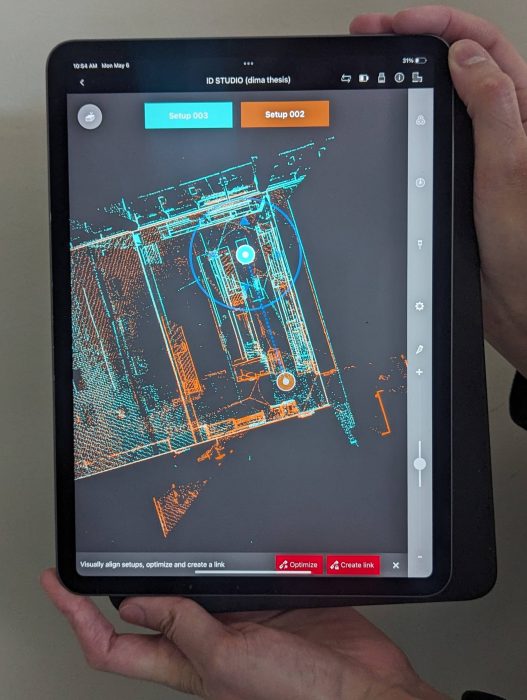
Real-time 2D visualization on iPad of 3D scan being conducted.
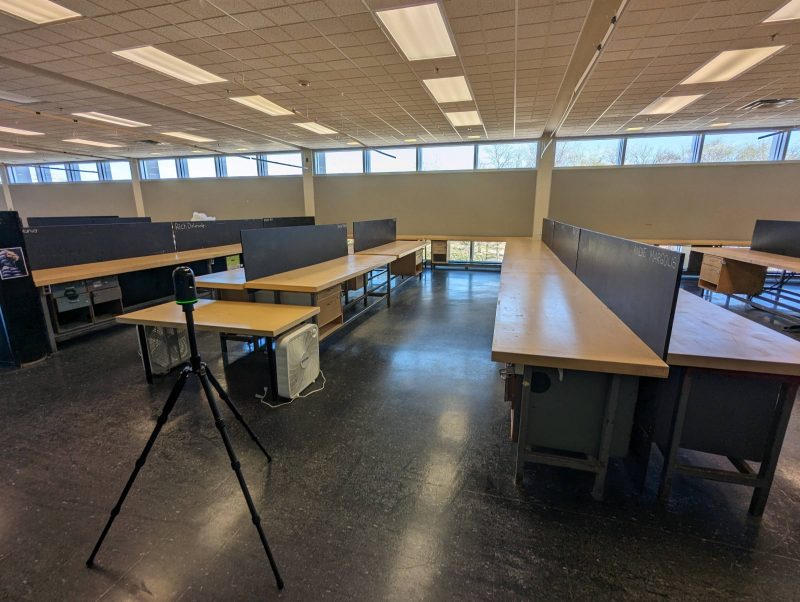
New tripod-mounted LiDAR scanner being tested in undergraduate Interior Design studio space.
The UM/SSHRC Explore Grants Program supports small-scale social sciences and humanities research projects, providing seed funding for innovative research endeavours. Jason’s research aims to utilize LiDAR scanning technology to create precise 3D representations of interior spaces on the University of Manitoba campus. These digital scans will be systematically archived to explore data storage, preservation, and digital visualization methodologies.
LiDAR scanning is used to map physical environments in intricate detail, generating 3D data and graphic visualizations through point clouds. Challenges such as data acquisition, scalability, and interoperability are central to this research, emphasizing the need for robust archiving protocols.

3D scan of John A. Russell Lounge; Blue orbs denote locations of previously captured scans.
The research not only intends to address technical challenges but also explores the cultural and historical significance of scanned spaces. By documenting and preserving these environments, the project aims to contribute to conservation efforts and enhance educational and virtual interior environment experiences. Future plans include expanding this research to include culturally and historically significant spaces across Manitoba, fostering inclusive preservation practices.
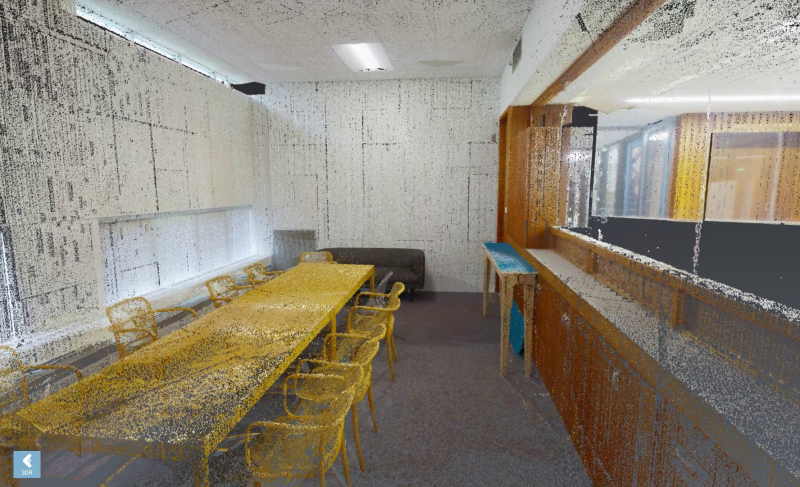
Recent 3D scan of ARCH II Meeting Room.
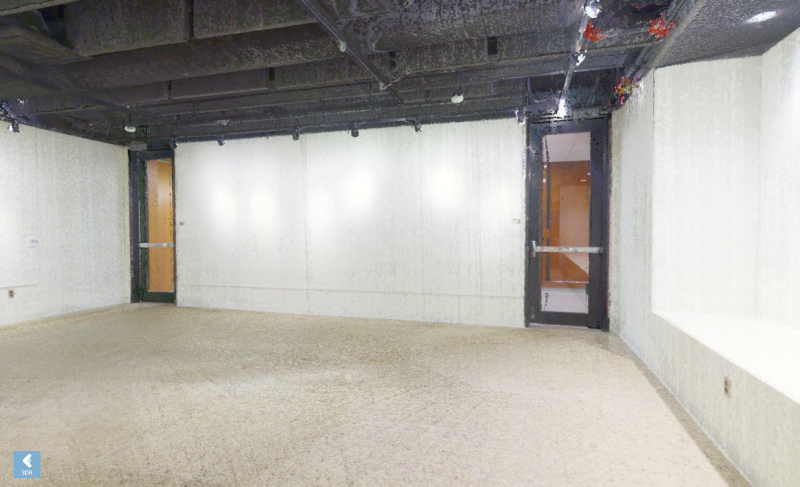
Recent 3D scan of ARCH II Pool Room.
Acknowledging the support of the SIEF fund, the University of Manitoba, and the Social Sciences and Humanities Research Council (SSHRC), as well as the URA program and the hard work of the undergraduate research assistants (Vyas Gopal, Shianne Epps, and Celine Huynh), Jason Shields expresses his gratitude.
For those interested in contributing suggestions for culturally or historically significant spaces for potential scanning, please contact Jason Shields at jason.shields@umanitoba.ca / jasonshields.com.






